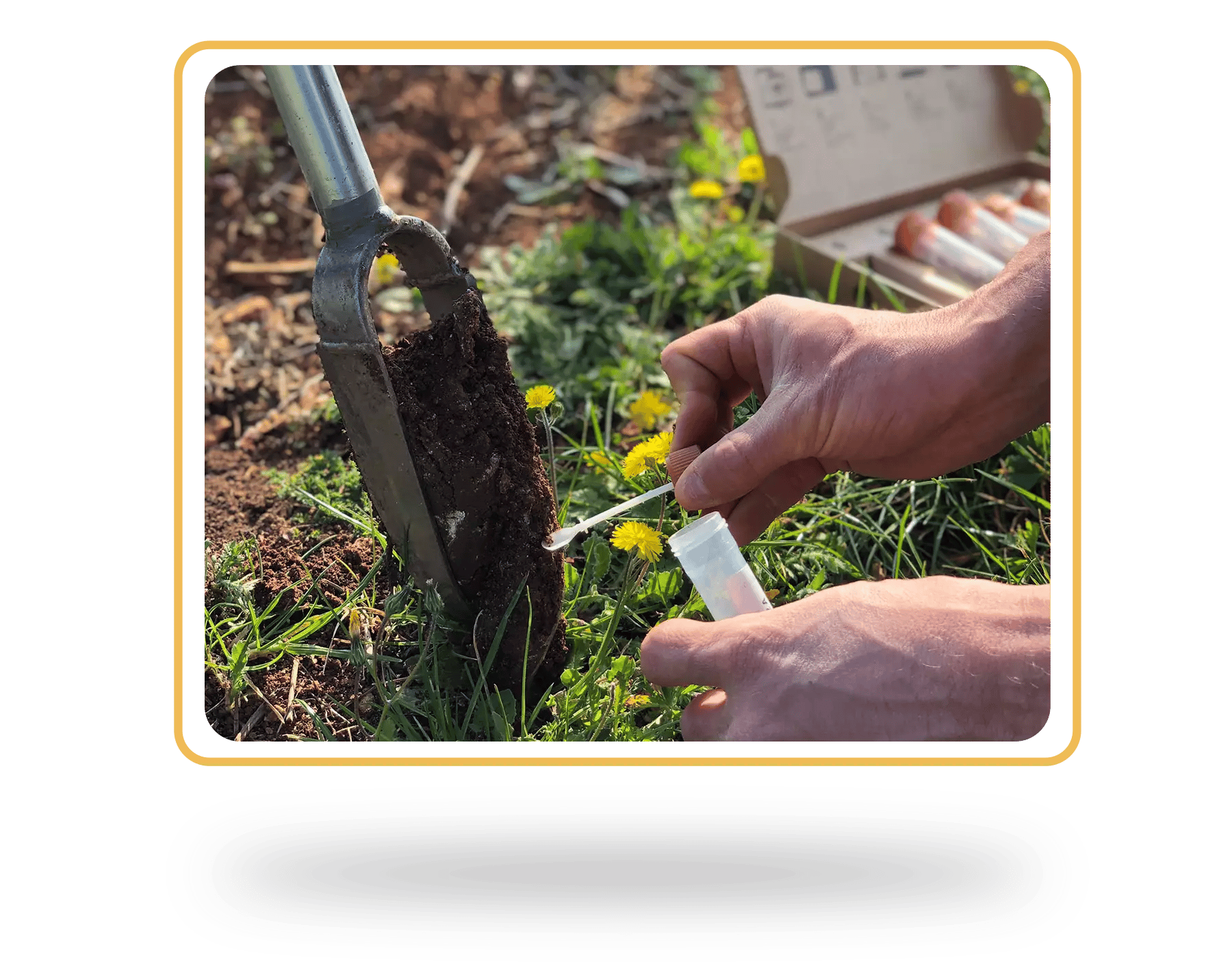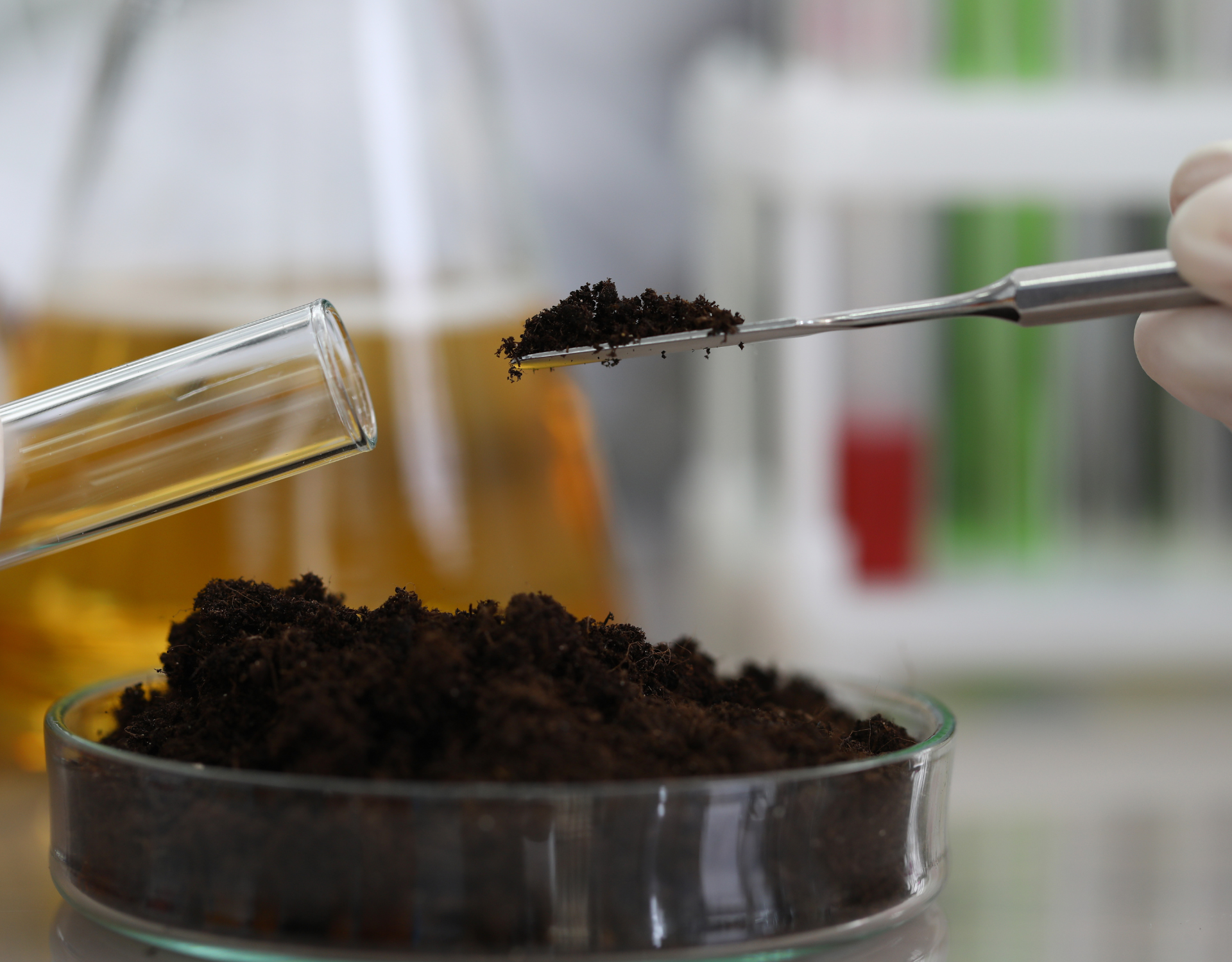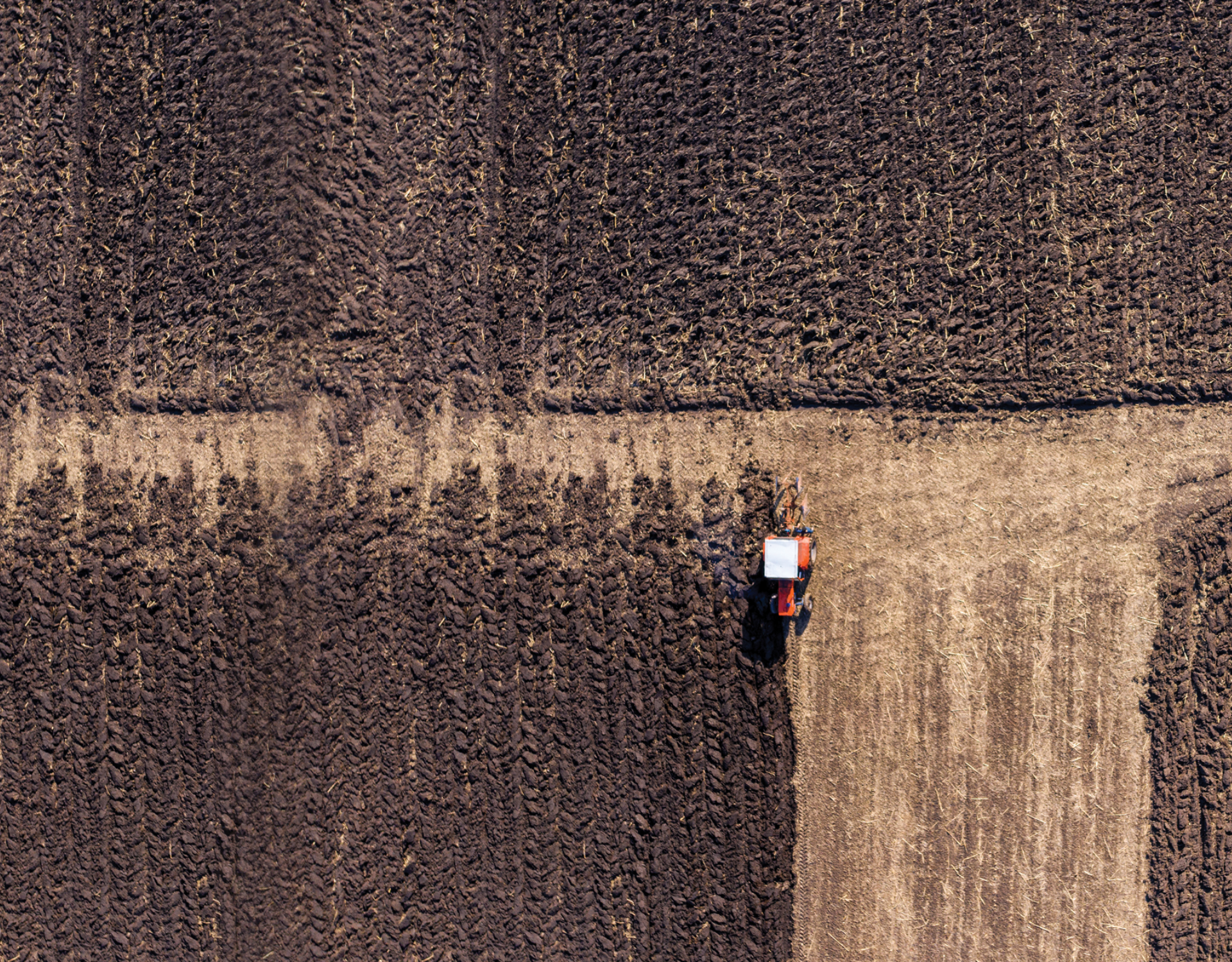Soil Testing in Agriculture
Agricultural soil testing can provide growers and farmers with valuable insights into the unique characteristics of their soil, enabling them to make data-driven decisions about soil management practices that ultimately improve crop yields and overall soil health.

- Chapter 1: Introduction
- Chapter 2: Why is soil testing important?
- Chapter 3: What are the different types of soil testing?
- Chapter 4: When and how often should I collect soil samples?
- Chapter 5: Who does soil testing near me?
- Chapter 6: What are the benefits of biological soil testing?
- Chapter 7: How do I interpret the results of a biological soil test?
- Chapter 8: How do I use the results of a biological soil test to improve the health of my soil?
- Chapter 9: What are the main differences between BeCrop Test and other biological soil tests?
- Chapter 10: Are there any drawbacks to using biological soil testing methods?
- Chapter 11: Conclusion
Introduction
Soil testing has a long history dating back to the mid-19th century when methods were developed to test soil nutrient levels. In the early 20th century, agricultural scientists developed the concept of soil testing to determine soil fertility and recommend fertilizer application rates. This involved measuring the levels of macronutrients, such as phosphorus and potassium, and adjusting fertilizer recommendations accordingly.
Over time, agricultural soil testing methods have become more sophisticated, with the addition of tests for micronutrients and soil pH. In the 1970s, soil testing also started incorporating measurements of soil organic matter content, which is important for understanding soil health.
Today, soil testing has continued to evolve, with new technologies emerging that allow for a more comprehensive understanding of soil biology. These technologies include DNA sequencing and eco computing, which can identify the types of microbes present in the soil and reveal which are active in the soil microbiome. This information can be used to develop more targeted soil management strategies that consider the complex relationships between plants, microbes, and soil nutrients.
Soil testing involves collecting soil samples from different parts of a field or garden, which are then sent to a laboratory for analysis. The laboratory tests the samples for key parameters such as microbial activity, disease risks, pH, nutrient levels, organic matter content, and more. Soil testing can provide growers and farmers with valuable insights into the unique characteristics of their soil, enabling them to make data-driven decisions about soil management practices that ultimately improve crop yields and overall soil health.
Supporting content
Why is soil testing important?
Soil analysis is an integral part of agriculture. Every year, growers take samples of their soils and evaluate the growth of their crops.
Soil testing is important in agriculture to determine the soil's nutrient levels, which is critical for healthy plant growth and high crop yields.
The results of soil testing can reveal nutrient levels, nutrient deficiencies, or excess nutrients in the soil, allowing growers to make informed decisions about fertilizer applications and other soil management practices.
For example, if soil testing reveals low potassium levels, growers can add a potassium-rich fertilizer to improve the soil's nutrient content. On the other hand, excess nutrients can lead to environmental problems, such as nutrient runoff and associated water pollution.
A comprehensive soil test can help growers avoid the over-application of fertilizers, reducing the risk of environmental impacts while maintaining healthy soil conditions for crop growth.
What are the benefits of soil testing?
- Improved crop yields: Soil testing can identify nutrient deficiencies or imbalances that may be limiting plant growth and yield, enabling growers to adjust their fertilization practices and optimize crop yields.
- Reduced fertilizer costs: Soil testing can also help growers avoid over-application of fertilizers, which can be costly and have negative environmental impacts.
- Improved soil health: Soil testing can provide valuable insights into soil health, including organic matter content, pH, and texture. By managing soil health appropriately, growers can improve soil structure, nutrient cycling, and water retention.
- Precision farming: Soil testing can help growers identify areas of their fields with different soil characteristics and nutrient needs, allowing for more targeted fertilization and other management practices.
- Environmental protection: By avoiding over-application of fertilizers and other soil amendments, growers can reduce the risk of nutrient runoff and associated environmental problems.
Overall, soil testing is a cost-effective tool that can help growers make informed decisions about soil management practices, leading to improved crop yields, environmental protection, and long-term sustainability.
What are the different types of soil testing?
Physical Soil Tests
include assessing soil structure, texture, and other physical characteristics like density, permeability, porosity, temperature, plasticity, aggregate stability, and more. These traits of soil relate to nutrient and water retention, water infiltration, and compaction.
Chemical Soil Tests
analyze for pH, phosphorus, potassium, magnesium, and calcium by the Mehlich 3 (ICP) test. Also, it can include bioavailability of the key macronutrients, like N, P, K, and micronutrients, Ca, Cl, Mg, Fe, Mn, Zn, and Cu), organic matter, and CEC – Cation exchange capacity, which is the capacity a soil to hold certain nutrients and provide a buffer against soil acidification.
Total Nutrient Digestion (TND)
measures the soil’s net worth when it comes to nutrients. While most extract tests provide you with what is “available,” the TND provides you with the nutrient potential of your soil i.e., Carbon, Nitrogen, Phosphorus, Potassium, Calcium, Magnesium, Sulfur, Zinc, Iron, Manganese, Copper, Boron, Molybdenum (Regen Ag Lab).
pH/Soil Acidity Tests
provide pH levels right in the field. Testing the pH of soil means calculating its hydrogen ions. pH values may range from 0 to 14. The pH levels can affect nutrient uptake, plant productivity, and crop growth. Testing soil acidity provides recommendations on lime applications to raise pH when needed.
Soil Salinity Tests
can be analyzed through the evaporation of total soluble salts (TSS) from the ground-water extract, measuring the electric conductivity (EC) of a saturated paste extract or a distilled water-earth dilution. Excess salt levels can inhibit plant nutrient uptake and crop growth.
Haney Tests
is a soil analysis method developed by Dr. Rick Haney, a soil scientist at the USDA Agricultural Research Service. This test measures various soil health parameters, including nutrient availability, pH, microbial activity (soil respiration), and organic matter content.
PLFA Tests
analyzes the components of cell membranes of soil microbes, which are called phospholipids. Similarly to how BeCrop uses DNA, it uses these phospholipids to distinguish between functional groups of soilborne organisms, but it is MUCH less specific than using DNA. For example, PLFA typically categorizes fungi and bacteria into just two groups each, while BeCrop can categorize down to species level
Microscopy
is a technique used to examine soil samples and study the diverse array of microorganisms present in the soil. This includes bacteria, fungi, protozoa, and nematodes, among others. Elaine Ingham is a renowned soil microbiologist and researcher who has popularized the use of microscopy in soil ecology through her work with The Soil Food Web.
Biological Soil Tests
is a type of soil analysis that assesses soil microorganisms' biological activity and diversity, such as bacteria, fungi, and archaea. This test also detects disease risks, blocked nutrient cycling pathways, and measures hormone production and stress adaptation. It also informs about microbe functions like nutrient cycling and salinity protection, bioremediation and detoxification, water management, and root growth promotion.
When and how often should I collect Soil samples?
The frequency of pulling soil samples depends on several factors, including the soil type, crop type, and previous soil management practices. As a general rule, it's recommended to pull soil samples at least once every 1-2 years for fields or areas with uniform soil characteristics and management practices. For fields with different soil types or management practices, soil sampling may need to be done more frequently.
Additionally, soil sampling is recommended before establishing a new crop or after a significant change in soil management practices, such as fertilizer application or irrigation adjustments. It's also important to pull soil samples at the same time each year to ensure consistent results and track changes in soil health over time.
Ultimately, the frequency of soil sampling should be based on the specific needs of your crops and your soil management goals. Consulting with a local agricultural extension office or a certified crop advisor can help determine the appropriate soil sampling schedule for your specific situation.
Supporting content
Who does soil testing near me?
There are various options available for soil test labs. Local government agencies, private laboratories, and agricultural extension offices are some of the most common places to get soil tested. Biome Makers partners with select labs like Waters Agricultural Labs and Regen Ag Labs that offer comprehensive physical, chemical, and biological soil testing.
So if you're wondering "who does soil analysis near me?", check out our partner page and find the closest place to get a comprehensive soil test.
What are the benefits of biological soil testing?
The benefits of using biological soil testing methods include the following:
- More detailed information: Biological soil testing methods can provide more detailed and specific information about the types and numbers of microorganisms present in the soil. This information can help identify potential biological soil health issues and suggest management practices to improve soil health.
- Identification of nutrient deficiencies: Biological soil testing methods can help identify nutrient deficiencies or imbalances that may not be detected by traditional chemical soil testing methods.
- Improved soil health: By identifying potential soil health issues, biological soil testing methods can help farmers and agriculture professionals make more informed decisions about soil management practices, ultimately improving the sustainability and productivity of their operations.
- Sustainability: Biological soil testing methods can help promote sustainability by reducing reliance on synthetic fertilizers and other inputs, promoting natural soil health, and supporting the long-term productivity of agricultural lands.
- Cost-effectiveness: Biological soil testing methods can be cost-effective, as they can help farmers and agriculture professionals target specific areas of their operations that may need attention rather than applying inputs across entire fields.
Thanks to new technology like Biome Maker’s BeCrop soil functional analysis, growers can quickly and easily assess the microbial populations of their soil. We have gathered a proprietary database of over 10 million taxonomic microbial references. In other words, we have the DNA of millions of microbes from soils all around the world. We use artificial intelligence and data science to identify which microbes are most abundant in your soil and how they affect your crops.
BeCrop® Test is the first soil biological analysis that predicts soil functionality in several aspects. Our database of soil microorganisms (fungi and bacteria) is associated with each crop. This is the work of many years of sequencing soil from different clients and project research on different crops.
BeCrop® Biological Soil Tests
Our best-selling service, BeCrop Test, analyzes biological agricultural inputs, including microbial (bacterial and fungal) content identification and bacterial absolute quantification.
- Analyze Yield Improvements: Receive actionable recommendations on farming techniques to improve soil functions and crop yield.
- Assess Nutrient Cycling: See the unlocked potential in plant nutrient pathways by understanding which microbes are cycling minerals in your soil
- Predict Disease Risks: Get early intelligence on crop disease and soil deficiencies to target your prevention and remediation methods and address any issues with the appropriate solutions matching your soil profile.
- Monitor Farm Practices: Make more informed agricultural decisions based on the actual impact of farming practices and ag inputs.
3 Simple Steps:
- Collect soil samples (just 3 spoonfuls of soil needed)
- Send the soil samples to our labs
- Get user-friendly reports
Now you can use the results to optimize crop performance and make the most informed farm decisions.
How do I interpret the results of a biological soil test?
To interpret the results of a biological soil testing analysis, it is important to understand what the different indicators mean and how they relate to soil health. It is also important to consider other factors affecting soil biology, such as management practices and environmental conditions.
Biome Makers Biological Soil Testing, BeCrop Test, provides a comprehensive soil testing report, BeCrop Report. Farmers and crop advisors can also interpret the results of a biological soil test using the BeCrop® Portal, which includes customized comparisons and analytical intelligence tools to empower data-driven decision-making. Explore the heatmaps, GIS map layers, and detailed microbial population tools to compare parcels and samples across locations and time.
BeCrop® Report
A comprehensive report on soil nutrient cycling, health, biodiversity, and more, delivered in a user-friendly breakdown of the soil microbiome functions.
- Estimated abundance of bacteria and fungi
- Microbial nutrient cycling pathways
- User-friendly tools for monitoring microbiome population over time
- Below-ground Biodiversity, Quality, and Health indices
- Risk indices for plant disease threats
BeCrop® Portal
Customized comparisons and analytical intelligence tools to empower data-driven decision-making. Explore the heatmaps, GIS map layers, and detailed microbial population tools to compare parcels and samples across locations and time.
- More power and confidence in your analysis
- Stay Ahead of the Game with Real-Time Project Tracking
- Compare and Visualize Results with Ease through BeCrop's Results Module
Supporting content
- Interpreting Soil Test Results: What Does the Soil Data Mean?
How do I use the results of a biological soil test to improve the health of my soil?
Here are some steps you can take to use the results of a biological soil test to improve the health of your soil:
- Identify the key issues: Review the results of your biological soil test to identify any issues or imbalances that need to be addressed. For example, you may need to increase the population of beneficial microorganisms, reduce the population of harmful microorganisms, or improve soil structure.
- Choose appropriate management practices: Based on your biological soil test results, choose appropriate management practices to address the identified issues. This may involve using cover crops, reducing tillage, adding organic matter, or applying microbial inoculants.
- Monitor progress: Regularly monitor your soil health and the effectiveness of your chosen management practices to ensure that you are making progress toward your goals. This may involve conducting regular soil tests, observing plant growth and yield, or measuring soil organic matter levels.
- Adjust management practices as necessary: If you are not seeing the desired improvements in your soil health, adjust your management practices as necessary. This may involve trying different types of cover crops, adjusting nutrient applications, or experimenting with different tillage practices.
- Continuously improve: Remember that soil health is an ongoing process, and there is always room for improvement. Regularly assess your soil health, experiment with new management practices, and stay current on the latest research and trends in soil health management.
What are the main differences between BeCrop Test and other biological soil tests?
The BeCrop Test process includes taking soil sample(s) and sending the sample(s) to the Biome Makers lab. The output is a functional analysis report on the soil microbiome. This process is simplified into two main steps:
Step 1: Laboratory Process:
The Biome Makers' lab team facilitates DNA extraction and implication to identify and quantify the microbial species. The data output is 'raw' genomic microbial data coding for specific names and abundances.
Step 2: Functional Data Analysis Process:
The Biome Makers data science and agronomists teams take the species data and run it through Biome Makers microbial function/ecological database. Our experts take this data and translate it to practical and simplified information describing what functions the microbes can perform and how they are expected to interact. The final result is a soil microbe functional profile in the form of a BeCrop Report.
BeCrop Test is powered by BeCrop Technology, home to the largest global taxonomic database of references of microorganisms. BeCrop Technology provides functional data by using machine learning to predict how microbes will function and interact based on compiled research database (referred to as “functional profiling”).
Benefits of Amplicon Sequencing + Ecological Analysis
-
Cheaper, very robust, and reliable for identifying a wide variety of species in the biologically active microbiome
-
Simplified data describing the soil health functions performed by microbes
-
Immediate practical value for marketing, R&D, product validation, and management recommendations
-
Support and insight from R&D staff, marketing and sales teams, agronomists and crop advisors
-
Extensive microbial ecology/function database: Biome Makers has developed an extensive microbial ecology/function database for BeCrop Technology and can integrate available taxa/function data.
Are there any drawbacks to using biological soil testing methods?
While there are many benefits to using biological soil testing methods, there are also some potential drawbacks to consider:
- Cost: Biological soil testing methods can be more expensive than traditional chemical testing methods. This is because they often involve more complex laboratory procedures and specialized equipment.
- Time: Biological soil testing methods can take longer to yield results than traditional chemical soil testing methods. This is because they often involve more complex laboratory procedures and may require longer incubation periods.
- Complexity: Biological soil testing methods can be more complex and require more expertise to interpret than traditional chemical soil testing methods. This is because they often involve measuring a wider range of soil parameters and require a deeper understanding of soil biology.
- Variability: The results of biological soil testing methods can be more variable than traditional chemical soil testing methods. This is because biological soil health is influenced by many different factors, including climate, soil type, and land use history, which can vary from one location to another.
- Limited standardization: There is currently limited standardization of biological soil testing methods, making it difficult to compare results across different labs and locations.
Despite these potential drawbacks, the benefits of using biological soil testing methods often outweigh the costs, especially for farmers and agriculture professionals who are committed to promoting sustainable agriculture and improving soil health.
Conclusions
In conclusion, soil testing is an essential tool for growers and farmers to evaluate the health and productivity of their land. By analyzing the soil texture, structure, and nutrient content, growers can make informed decisions about crop management practices, such as irrigation, fertilization, and soil amendment. The soil testing results can also be used to identify potential soil health issues and develop soil improvement plans to optimize crop yields and long-term sustainability. Whether it's a basic soil test or a biological soil analysis like the BeCrop Test, soil testing is a valuable investment in the health of your land and the success of your farming operation.
Contributors:

Gus Plamann
Agronomist

Jamie Nix
Content Writer
From Our Blog
Stay up to date with what is new in our industry, learn more about the upcoming products and events.

Validated Actionable Insights for Real-World Impact
Insights into Regenerative Agriculture and Sustainability in Coffee
